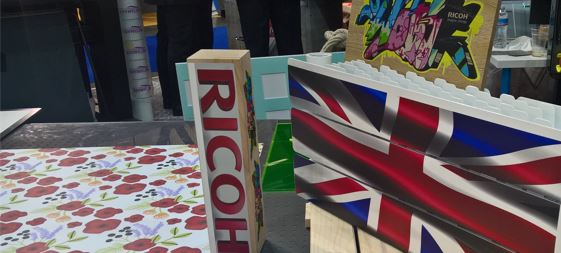
The migration to, or adoption of, wide-format printing by commercial printers is slowing. So says findings from the Business Outlook Survey for WhatTheyThink’s Printing Outlook report.
What was a new business opportunity has become a staple portfolio addition for many print service providers (PSPs). They have already successfully expanded into wide-format applications ranging from wall and window graphics to point of purchase and signage.
However, the report goes on to say not all the opportunities have reached maturity and there are still some exciting areas to be explored.
One was soft signage – something only 11 per cent of respondents had added. Others were specialty item printing and direct to garment printing.
Another was the gradual return to pre-pandemic demand volumes prompting PSPs to send work out that could in fact be easily managed through investment in additional capabilities.
Growth in the worldwide large-format printer market was something Shingetsu Research was bullish about as I shared in this blog. It predicted a CAGR of 5.4 per cent from 2021 to 2027 and expected it to reach $11.4 billion by 2027 from $8.8 billion in 2020.
When considering current markets where demand is buoyant, or how to respond to any predicted uplift, it is important to evaluate what technology developments can offer and how the right systems and solutions can be vital to success.
The latest market introductions come with some interesting business winning enhancements. They include:
Hybrid technology
With flatbed and roll-fed printing capabilities in an all-in-one system PSPs can create a diverse range of applications. Some solutions service wide format’s core business of traditional applications such as indoor and outdoor signage, point of purchase, vehicle wraps, posters, art, event, and floor graphics, and décor such as wallpaper. They can also be effectively used in other markets such as short run jobs in commercial, packaging, label, and industrial sectors.
Substrate versatility
Substrate flexibility is at the heart of production versatility and enables the completion of creative applications in advertising, packaging, and textile fields. It can also help operations expand into new and emerging market segments like vehicle wrapping, architectural layouts, home furnishing, and décor applications.
Inks and colours
The report from Shingetsu Research states the quality delivered by large format systems, enabling them to deliver a broader range of services, is instrumental in investment by PSPs.
Among the technology advances driving this today is the introduction of orange and green ink. Used in combination with process colours to extend the colour gamut, or directly as a spot colour, they allow a far greater number of colours to be accurately reproduced.
Sustainable accreditation
Aside from digital systems producing only the printed volume required, which minimizes waste and energy expenditure, manufacturers have also focused on increasing the sustainability of their solutions. Among them is latex ink that combines the ability to deliver sharper, richer colour on a wider range of substrates with faster drying times and reduced energy consumption. They also help meet emissions requirements and as such are Greenguard certified.
Sander Sondaal is director, Commercial Print Sales, Graphic Communications Group, Ricoh Europe.
Print this page
